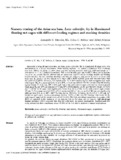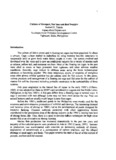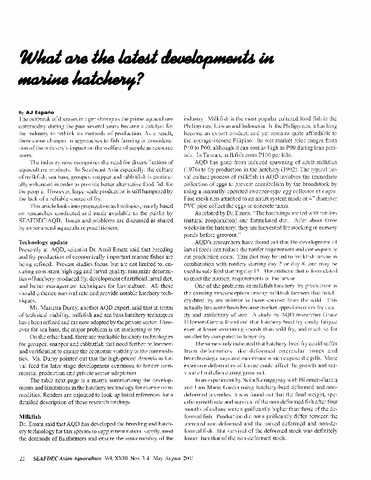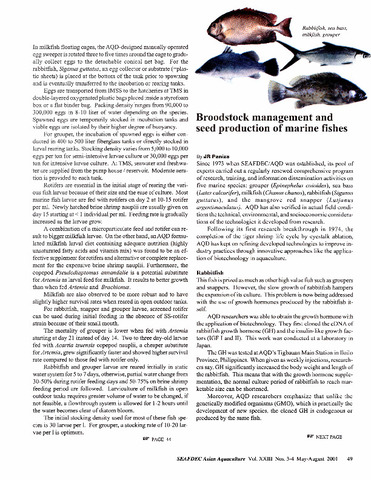Nursery rearing of the Asian sea bass, Lates calcarifer, fry in illuminated floating net cages with different feeding regimes and stocking densities

Tingnan/
Petsa
1996Page views
585Metadata
Ipakita ang buong tala ng itemCited times in Scopus
Share
Abstract
Successful rearing of hatchery-reared sea bass, Lates calcarifer, fry in illuminated floating cages was demonstrated in a 42-day experiment. Three feeding regimes, i.e. natural zooplankton (NZ) + minced fish flesh (MFF), NZ alone, or MFF alone and two stocking densities (600 and 1 200 individuals m2) were tested in a 3 × 2 factorial experiment. Fish reared in unlit cages and fed MFF alone during daytime served as the control. Results showed that no interaction existed between stocking density and feeding regime and that the two stocking densities used did not influence fish growth in terms of mean final body size. In general, sea bass reared in lit cages (NZ + MFF and NZ) grew and survived better than the control fish (MFF). However, fish reared under NZ + MFF feeding regime had the highest final mean total length (TL, 42.1 mm) and body weight (BW, 1 311.8 mg) followed by fish reared under NZ feeding regime (mean TL = 26 mm, BW = 415 mg). Fish in the unlit control cages exhibited the poorest growth (final mean TL and BW: 26 mm and 277.6 mg BW). Furthermore, specific growth rates (range: 5.7–8.5% day−1) of fish in lit cages were significantly better than those of fish in the unlit control cages (mean: 3% day−1). Percentage survival (38%) of fish stocked at 600 m−2 density and fed NZ was not significantly different from fish in the NZ + MFF feeding regime. However, increasing the density to 1 200 ind. m−2 tended to significantly decrease percentage survival (20%) of fish with NZ feeding. Fish reared in the unlit control cages had the poorest survival of 13–14%. The high percentage composition by number (CN, 88%) of copepods in the stomachs of sea bass fry fed on NZ alone and the equally high percentage feeding incidence (94%) indicated that fish fed sufficiently on natural zooplankton. Supplemental feed using minced fish flesh contributed about 43–59% of the fish diet in addition to natural zooplankton.
Suggested Citation
Fermin, A. C., Bolivar, M. E. C., & Gaitan, A. (1996). Nursery rearing of the Asian sea bass, Lates calcarifer, fry in illuminated floating net cages with different feeding regimes and stocking densities. Aquatic Living Resources , 9(1), 43-49. https://doi.org/10.1051/alr:1996006
Paksa
Taxonomic term
Mga koleksyon
- AQD Journal Articles [1249]
Related items
Showing items related by title, author, creator and subject.
-
Culture of grouper, sea bass and red snapper
Toledo, Joebert D. (University of the Philippines Aquaculture Society, Inc., 2001)Marine fish production has increased dramatically in the past ten years and majority of the cultured species were produced in Asia in 1992. Increase in production was accompanied with concerns on increasing outbreak of ... -
What are the latest developments in marine hatchery?
Españo, A. J. (Aquaculture Department, Southeast Asian Fisheries Development Center, 2001) -
Broodstock management and seed production of marine fishes
Paniza, J. R. (Aquaculture Department, Southeast Asian Fisheries Development Center, 2001)



